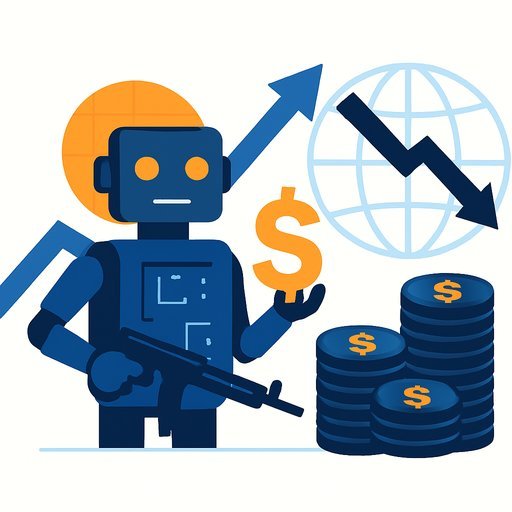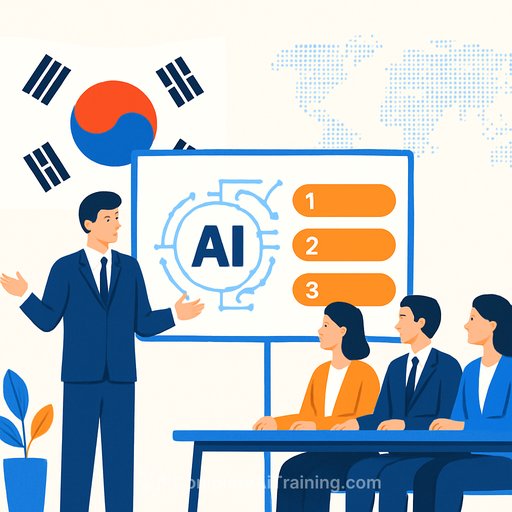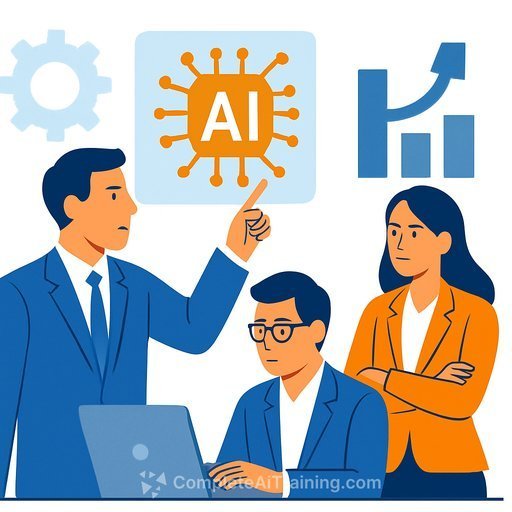Statista cuts ~80 roles as AI automation reshapes data operations
On October 15, 2025, Statista CEO Marc Berg announced the elimination of approximately 80 positions, primarily within Team Content. The move centers on automating repetitive data aggregation while increasing investment in data identification and contextualization. Despite 18% year-over-year growth in Q4 2024, leadership is reorienting the business toward higher-value, AI-enabled services and a data-as-a-service model.
Berg called the decision difficult but necessary to protect long-term competitiveness for over 90% of employees. The company is prioritizing Statista Connect, Statista Healthcare, and SynthiePop (a synthetic population product) as future growth drivers.
What changed - and why it matters for executives
Berg cited four tailwinds: economic uncertainty, geopolitical tensions, the rise of generative AI, and evolving customer behavior. The strategic response: automate standard processes, double down on expert tasks, and shift resources to platform-led services.
This is a textbook pivot from labor-heavy content production to scalable data platforms. For leaders, the signal is clear: move human effort to highest-skill layers and let systems absorb repeatable work.
The contradiction: growth and layoffs
Cutting roles after strong growth will create friction with employees and the market. Comments on LinkedIn questioned why open roles remained unfilled alongside layoffs and whether retraining was a missed option.
That tension is now common in AI-era restructures. The through-line: reallocate spend to product bets with defensible margins, not incremental throughput.
Industry signal check
AI adoption is now a default assumption in data-heavy operations. Research cited by Statista points to high usage of AI in advertising functions, with content generation and targeting leading the way. Salesforce has reported large portions of internal work now handled by AI agents, and OpenAI claims step-change cost declines in AI processing.
For context on industry guidance, see the IAB Tech Lab's work on AI in advertising. Adoption is no longer experimental; it is operational.
Risks and opportunities in the reorg
- Operating model: Transition from content throughput to data platform services with productized solutions.
- Portfolio bet: Healthcare and synthetic populations demand different skills, partnerships, and compliance rigor.
- Talent strategy: Open roles vs. exits will be scrutinized. A formal redeployment track could reduce brand damage.
- Customer value: "Holistic service" only lands if workflows connect research, insight, and activation without friction.
- Data quality: Automated aggregation risks error propagation. Human-in-the-loop QA is non-negotiable.
- Culture and optics: Transparent criteria and active outplacement are now table stakes for trust.
What a smart playbook looks like
- Org design: Stand up an Automation Office to own process mining, model ops, QA, and change management.
- Redeployment: Create 90-day reskilling tracks for content analysts into prompt engineering, data QA, and client solutions.
- Model governance: Define data lineage, approval flows, and red-team tests for synthetic data and summarization outputs.
- Measurement: Track cycle time, cost per insight, error rate, customer NPS, and margin per product line.
- Build vs. buy: Use internal models where proprietary advantage exists; buy for commodity tasks.
- Client comms: Publish an AI quality charter and SLAs to retain enterprise trust during transitions.
- Financial guardrails: Tie automation wins to unit economics and payback periods, not vanity productivity metrics.
- Compliance: Lock policies for privacy, bias, and synthetic data usage, especially for healthcare work.
- Regional nuance: Plan for European labor rules and data residency from day one of the redesign.
Implementation checkpoints for the next two quarters
- 0-30 days: Map top 10 repeatable workflows; select three automation pilots; define human review thresholds.
- 31-60 days: Launch redeployment cohorts; ship pilot outputs to a controlled client set; benchmark error rates vs. human baseline.
- 61-90 days: Scale successful pilots; integrate dashboards for CFO/COO; recalibrate pricing for AI-assisted deliverables.
Community response
Reactions ranged from support to sharp critique. Some professionals argued Team Content talent could have been retrained into AI-model-centric products. Others saw the announcement as cost-cutting dressed in strategy, especially with open roles listed.
Berg underscored Statista's values and asked his network to help affected employees find roles. The outcome will hinge on execution quality, not statements.
Key questions for your next leadership meeting
- Which processes cross the automation threshold today, and which require human judgment for the next 12 months?
- What is our redeployment target rate and the budget per employee to achieve it?
- How will we evidence data quality and compliance for synthetic and healthcare products to enterprise clients?
- What margin expansion do we expect per product line from automation, and on what timeline?
- Which customer outcomes improve because of this shift, and how will we prove it?
Timeline recap
- 2023: Competitive pressure triggers a broad transformation.
- 2024: New product strategy and leadership; CFO and Chief People Officer appointments; momentum builds in Q3.
- Q4 2024: 18% year-over-year growth.
- Oct 2024: Industry guidance on AI in advertising frameworks expands via IAB efforts.
- Jul-Sep 2025: Public claims of major AI cost declines and agent adoption across tech leaders.
- Oct 15, 2025: Statista announces ~80 role eliminations, primarily in Team Content.
Bottom line
This is a strategic repositioning, not a cash crunch. The winners in this phase will pair automation with disciplined redeployment, rigorous QA, and product bets that convert data into durable enterprise value.
Helpful resources
- IAB Europe for industry research on AI adoption.
- Complete AI Training: courses by job to build targeted upskilling tracks.
- AI Automation Certification for teams moving into AI-augmented roles.
Your membership also unlocks:






